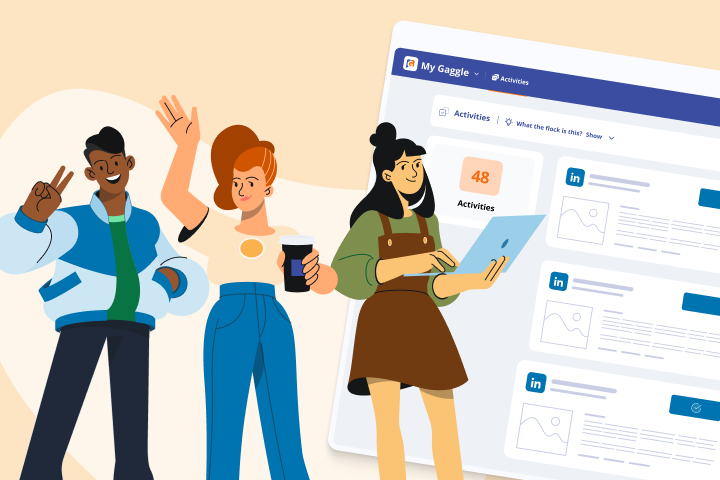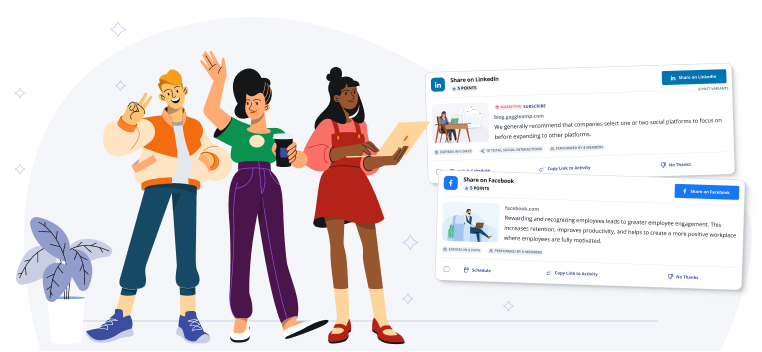The Benefits of Employer Branding for Hiring and Retention
Employer branding might sound like a buzzword, so getting buy-in from executives to invest more in employer branding campaign efforts can be tricky.
However, it has a substantial impact on the company’s overall performance and can be the difference between a struggling startup and a thriving unicorn company.
To help you get buy-in from executives and solidify your own conviction in employer branding, we’ll discuss six key benefits of a strong employer brand and how it directly impacts the company’s financial success.
What Is Employer Branding?
Employer branding is how your brand is perceived, by both current employees and the general public, as an employer.
Factors that influence a company’s employer brand image range from cultural aspects like PTO policies and employee well-being initiatives, to career growth opportunities such as promotions and budgets for educational conference attendance.
Below, we’ll discuss some key benefits of great employer branding and demonstrate how it helps companies achieve their goals faster.
The Benefits of Employer Branding
Employer branding may seem like a topic reserved specifically for HR, but it strongly impacts the entire organization’s growth. Here are a few specific benefits you can use to build a case for the importance of investing in employer branding.
Benefit #1: Attract Top Talent and Passive Job Seekers
The best talent has unlimited job opportunities, and most aren't actively seeking jobs.
If your main recruiting strategy relies on inbound applications from job boards, you're missing out on the only percentage of talent that you truly care about.
Fortunately, employer branding is an effective solution to capture the best talent, who are often passive job seekers.
This is because top-performing employees are always on the lookout for new growth opportunities. Even if they aren't actively searching for a new job, they might stop scrolling on LinkedIn if they notice a job post for a company that they know offers excellent growth opportunities.
Robotics startup Figure is an excellent example of a company that has heavily invested in good employer branding, and it has paid off in spades. Many of its employees were previously leading roboticists at brands like Tesla and Boston Dynamics before they decided to leave their comfortable positions and work on this new startup.
Figure founder Brett Adcock has spoken at length about the importance of positive employer branding and investing in top talent acquisition.
His companies have a proven track record of success and provide excellent employee career opportunities. So, when he created a LinkedIn post promoting a new job opening, it generated hundreds of likes and plenty of comments.
While most job posts only generate a handful of likes and a couple of comments, this one significantly outperformed the average job post thanks to Adcock's substantial investment into employer branding.
You'll also notice that many commenters were recruiters, mentors, and high-level executives promoting the position to their networks. These people are incentivized to promote the position because it's a way they can provide value to their networks as they realize a job at Figure is an outstanding career opportunity.
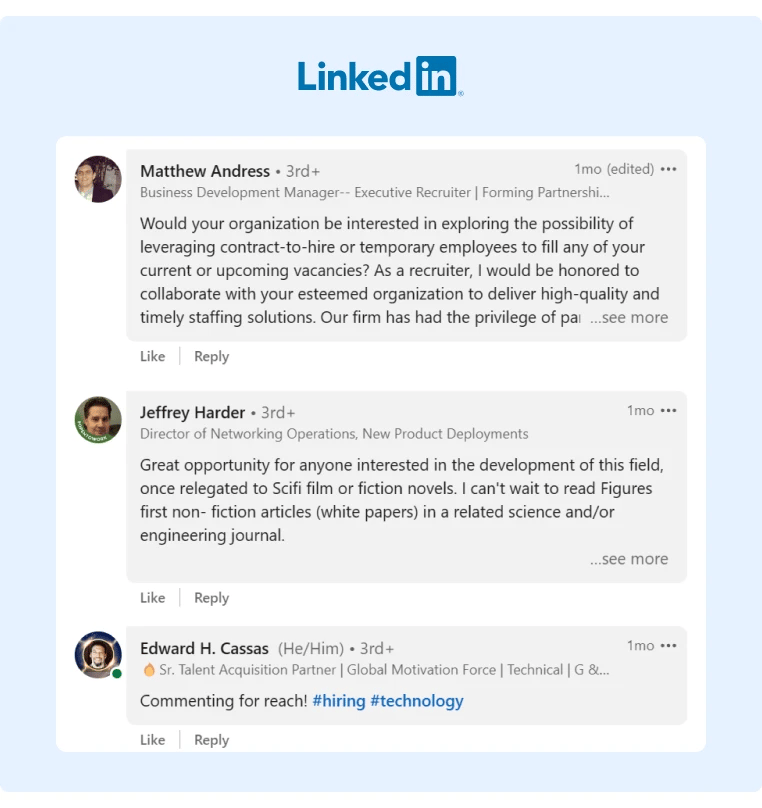
Source: Brett Adcock
An additional benefit of strong employer branding is that other people with no affiliation to your brand will likely share your content with their networks if they believe your company is truly a valuable career opportunity.
Benefit #2: Reduce Hiring Costs
The traditional route of posting jobs on job boards and hiring recruiting firms to find new hires is expensive and tends to yield subpar results.
On the other hand, employee referrals are often much more cost effective and tend to generate higher quality candidates.
In fact, the average cost per hire for a new employee hired through the traditional route of using a recruiting firm is about 15% to 30% of the hired employee's annual salary. On the other hand, the cost per hire of a referred employee is only the employee referral bonus you choose to offer.
For context, the average employee referral bonus is only $2,500.
In addition, the quality of employee referrals tend to be much higher. This LinkedIn post is excellent proof:
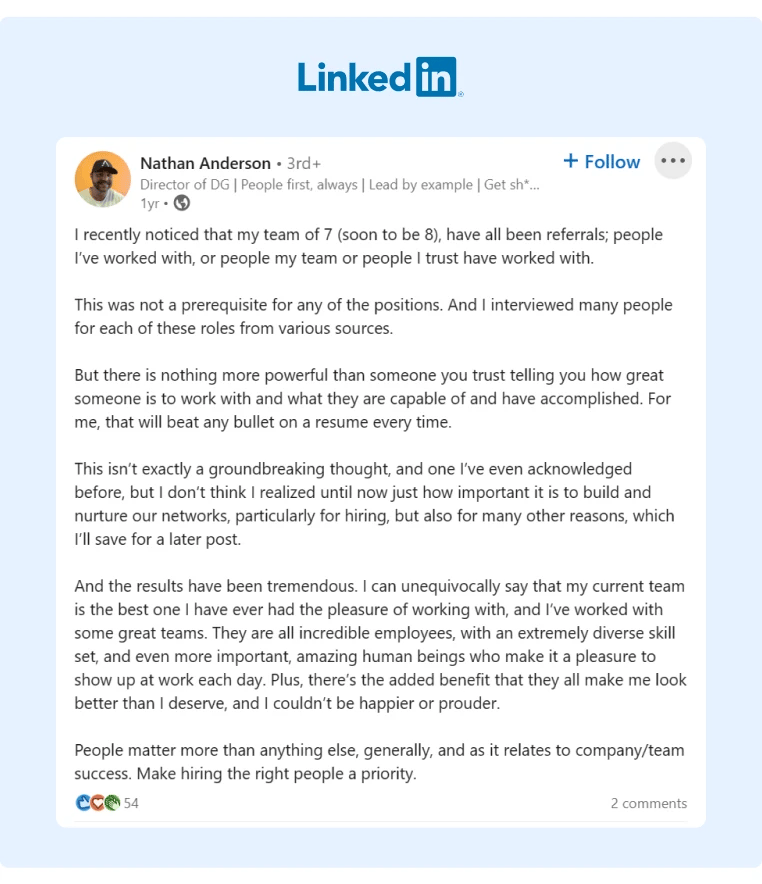 Source: Nathan Anderson
Source: Nathan Anderson
It's clear that employee referrals tend to generate higher quality candidates at a lower cost per hire than traditional recruiting processes. So, how do you get employees to refer more of their friends?
While offering a referral bonus is a nice incentive, employees that love the brand they work for and what it stands for are usually happy to refer their friends without any incentive. In contrast, if employees are unhappy with the work culture, they probably won’t refer friends regardless of whether or not you offer an incentive.
To encourage more employee referrals, create a work environment that employees love and actively encourage employee engagement. Then, just let your employees know when there's an open job position, and they'll likely spread the word among their social network.
Benefit #3: Maximize Salary Value
It's important to pay employees what they're worth, though some companies simply can't afford to compete with the salaries that larger companies like Facebook or Google can offer.
Fortunately, salary is only one element of your employee value proposition (EVP).
In fact, a survey showed that 60% of Americans would take a job that they love and take a 50% pay cut to their current income over a job they hated that doubled their current income.
So, even if major companies like Facebook and Google can offer a more attractive salary than your company, potential candidates also consider other perks like career opportunities, work-life balance, and personal health and wellness initiatives.
In addition, high performers tend to place even greater importance on career growth and educational opportunities. Creating an employer brand that prioritizes these aspects can help you acquire talent at a lower salary.
This LinkedIn post is a perfect example of how you can attract high quality job candidates even if you can't offer the same salary:
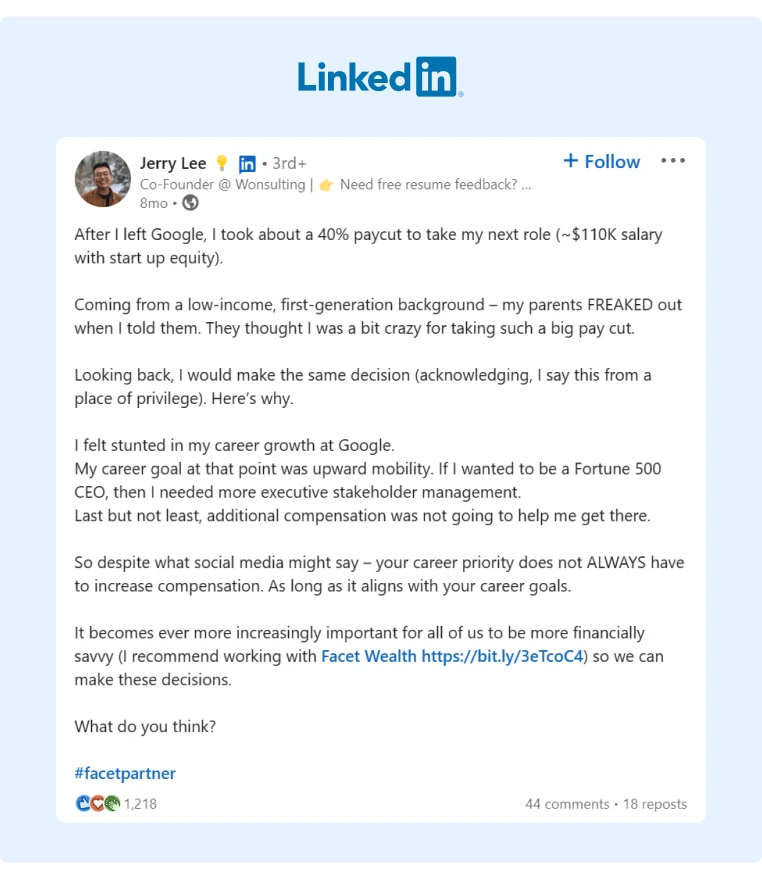
Source: Jerry Lee
Benefit #4: Improve Employee Retention
The leading cause of employee churn is burnout, a key issue caused by toxic company culture.
As we mentioned earlier, hiring new employees usually costs the company about 15% to 30% of the hired employee's annual salary. That doesn't account for the opportunity cost of slowed growth as the company searches for a new employee.
However, you can significantly reduce employee churn and eliminate these costs if you prioritize employer branding and build a culture that employees love.
In addition, if you have an excellent employer brand and are one of the most respected brands in your industry, employees won't want to leave your company if moving elsewhere would be considered a step down.
Benefit #5: Increase Credibility With Customers and Prospects
If your prospects see negative employee reviews and testimonials on Glassdoor and other employee sites, they will likely lose trust in your brand.
In contrast, if employees leave glowing reviews and talk about how much they love your brand on social media, prospects are more likely to trust your brand as it shows them the core company values are strong (and your brand probably doesn't rip off its customers).
You've also probably heard plenty of examples where employees complained about their employer on social media, and it tarnished the company's reputation enough to impact its bottom line.
The Ellen Show is a perfect example of a brand that rapidly declined and was eventually canceled due to internal turmoil that began with employees posting about negative work experiences on social media.
So, while it may not be intuitive, employee well-being can directly impact sales.
Right now we all need a little kindness. You know, like Ellen Degeneres always talks about! 😊❤️
— Kevin T. Porter (@KevinTPorter) March 20, 2020
She’s also notoriously one of the meanest people alive
Respond to this with the most insane stories you’ve heard about Ellen being mean & I’ll match every one w/ $2 to @LAFoodBank
Benefit #6: Employees Deliver Better Results
Plenty of studies prove that happy employees are more productive for a few reasons.
First, happy employees tend to be more motivated and therefore work harder to reach company goals. In addition, happier employees that aren't operating from a mindset of fear tend to be more creative and think of more effective solutions.
Cultivating an excellent employee experience is key to improving your company's growth speed.
In addition, happy employees who are proud of their company are more likely to deliver a better experience for clients and customers, which can directly impact sales and customer retention.
The Harvard Business Review recently did a study that found a strong correlation between employee experience and customer experience.
To conduct the study, they compared a company’s Glassdoor rating with its ACSI (American Customer Satisfaction Index) rating and found that every one-star improvement in a company’s Glassdoor rating corresponded with a 1.3 point out of 100 improvement in customer satisfaction scores.
Improving company culture and delivering an outstanding employee experience has a direct impact on your company’s profits.
How To Start Your Employer Branding Strategy
If you're not sure how to start improving your employer brand, we created an entire strategy guide with actionable step-by-step instructions.
Or, if you want a simple tool that makes it easy for you to immediately boost employee engagement by encouraging employees to act as brand ambassadors, you can try GaggleAMP.
It's an employee advocacy tool that makes it easy to assign engagement activities, track employee engagement, and reward employees for their efforts.
To see for yourself how it works, you can schedule a demo today.






